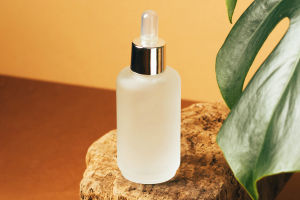A couch is more than just a piece of furniture—it's a central feature of your living space.
When investing in a quality couch, you want one that is comfortable, durable, and stylish.
But how do you determine what makes a couch high quality? Let's explore the key elements that define a quality couch to help you make the best choice.
1. High-Quality Materials
The materials used in a couch are the foundation of its quality. The best frames are typically made from solid hardwoods like oak or maple, which provide durability and strength. Softer woods or particleboard are less reliable and can break down over time.
Upholstery: Natural fabrics such as leather, linen, or cotton are known for their breathability and comfort. Leather, in particular, offers timeless appeal and durability.
If you prefer a low-maintenance option, synthetic blends or microfiber fabrics are excellent choices due to their resistance to stains.
Cushion Fillings: High-density foam offers great support and longevity, while down-filled cushions provide a plush, luxurious feel. A down-blend cushion, which combines foam and feathers, is a great middle ground for both comfort and support.
2. Superior Craftsmanship
The way a couch is made speaks volumes about its quality. A solid wood frame should feature reinforced joints, such as corner blocks or dowel joints, ensuring long-term stability.
A strong suspension system is also crucial for comfort. Look for eight-way hand-tied springs or sinuous springs, which distribute weight evenly and prevent sagging.
Stitching and Finish: Quality stitching is another sign of expert craftsmanship. Even, tight stitching and neatly finished seams show attention to detail.
Loose threads or crooked seams suggest poor construction, which will affect both the look and durability.
3. Comfort and Ergonomics
A quality couch must be comfortable for daily use. The ideal seat depth lets you sit with your feet flat on the ground while providing enough support for your lower back. The backrest should offer firm support to encourage good posture while lounging.
Seat and Armrest Height: The height of the seat should make it easy to sit down and stand up without straining your legs. Similarly, the armrests should be at a comfortable height, allowing you to relax naturally.
4. Durability and Longevity
A quality couch is built to last. Hardwood frames, resilient fabrics, and robust suspension systems contribute to long-term durability. Pay attention to the abrasion rating of the fabric—higher ratings mean better resistance to wear, making it ideal for households with children or pets.
Maintenance: Choose fabrics that are easy to clean or come with removable, washable covers. Stain-resistant materials can help maintain the couch’s appearance over time.
5. Aesthetic Appeal
A quality couch should fit your home’s décor and personal style. Whether you prefer a modern, minimalist look or a more traditional design, the couch should complement the overall vibe of your living space.
Neutral tones and classic designs tend to remain stylish over the years, making your investment last longer.
6. Value for Money
While a quality couch may require a higher initial investment, it offers excellent value over time. Durable materials, expert craftsmanship, and lasting comfort ensure that your couch will serve you well for years.
Consider it a worthwhile investment in both style and functionality for your home.
A quality couch combines durable materials, expert craftsmanship, and optimal comfort, making it a central piece in any living space.
By understanding these key elements, you can choose a couch that not only enhances your home’s aesthetic but also offers comfort and durability for years to come.


